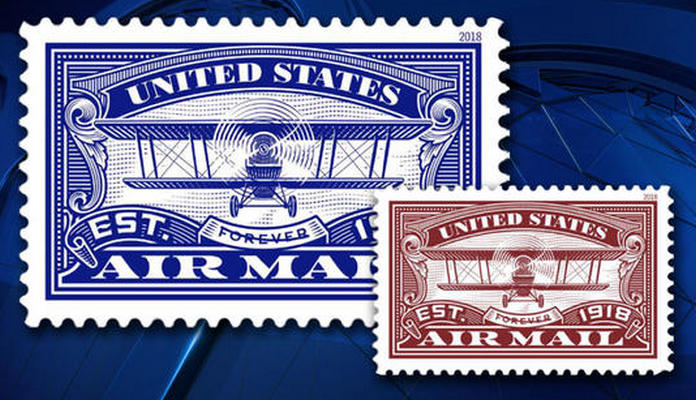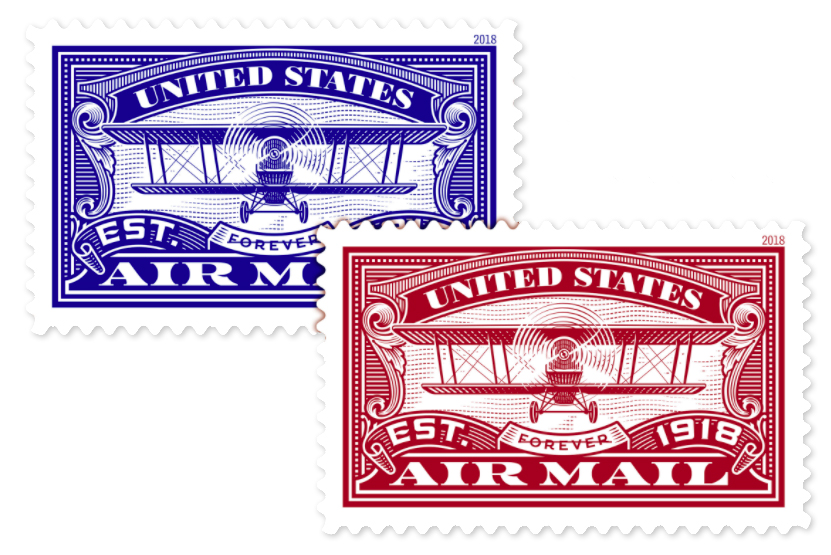


First–Class Mail International items that use Registered Mail service must be sealed. Mailpieces not sealed by conventional means, such as moistening the gummed flaps on envelopes, must be closed in such a manner as to prevent the contents from falling out or being damaged during postal handling and transport. Unregistered First-Class Mail International items may be sealed at the sender’s option.
AIRMAIL USPS FREE
First-Class Mail International letters and large envelopes (flats) that qualify as Free Matter for the Blind must bear the marking “Free Matter for the Blind” in the upper-right corner of the address side of the mailpiece.First-Class Mail International postcards, letters, and large envelopes (flats) must be marked “AIRMAIL/PAR AVION” or have PS Label 19-A, Par Avion Airmail, or PS Label 19-B, Par Avion Airmail, affixed to the address side of the mailpiece.The following markings apply to First-Class Mail International items: USPS Marketing Mail Eligibility Decision Treeįirst-Class Mail International items are subject to the addressing requirements in 122.Designing Letter and Reply Mail (PUB 25).WawrukiewiczĬama Publishing Co., Portland, OR. US Domestic Postal Rates, 1872-1999, Henry W Beecher and Anthony S. Once again, the more difficult collection includes commercial covers, properly franked with the correct postage for the time instead of categorized as philatelic, such covers are truly US postal history.Īmerican Air Mail Catalogue, 5 th Edition, vol. Inaugural CAM covers of routes 2,3, 4, 5,6,7, 8, 9 can be found with these integrated rates, but the confusion resulted in many covers with incorrect postage. During that time the CAM route rate existed in parallel with the USG Airmail Service rate causing confusion for collectors and postal clerks.

5c Rate Change on Printed EnvelopeĪnother interesting aspect of US airmail rate collecting is the period between the Februand February 1, 1927. Commercial covers flown over the CAM 8 routes franked with the 10c Map stamp are quite common, but letters mailed from Los Angeles to Seattle, bearing the 15c rate, especially franked with the 15c Map stamp, are scarce. The second, more difficult method, would be collections of covers mailed, franked and routed with proper rates during their period of validity. Collectors, Dealers and Cover preparers began to focus on first day usage by providing private inscriptions, rubber stamped cachets and specially printed envelopes to dress up airmail rate change letters. Other franking adding to 24c might also be included, but the last date for 24c rate was July 13, 1918. US Government covers from May 15 th, 1918, include C-3 franked covers from New York, Philadelphia and Washington DC. The easiest and most prevalent method is to collect the first and last usage of each new rate, properly franked and routed. Domestic Airmail Rate on Commercial CoverĬollectors approach airmail rates in two major ways. The USPS stopped issuing airmail stamps with that directive. The USPS eliminated airmail letter rates in 1976, with the proviso that first class letter mail would now travel by the fastest method possible, but not less than the speed of airmail if it was available.
/cloudfront-us-east-1.images.arcpublishing.com/gray/MVGEQJH45RIU5KRJ773NFBXQ6I.jpg)
Then, in 1925 2c was added to pay for overnight service between Chicago and New York City a rate which lasted until the end of US Government airmail service on January 31, 1927. The first US airmail stamp included the price of special delivery to first destination addressees. Since the US government began a special airmail service in 1918, there have been scores of changes reflecting the rising cost of airmail, efforts to get more use of airmail service or additive airmail services. Integrated USG and CAM rate on First Flight Cover


 0 kommentar(er)
0 kommentar(er)
